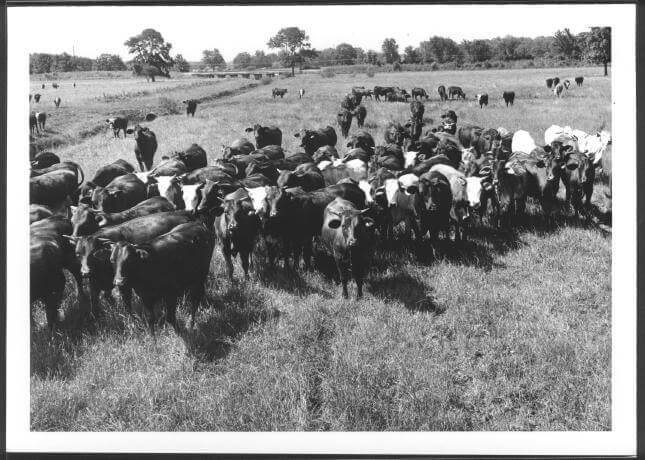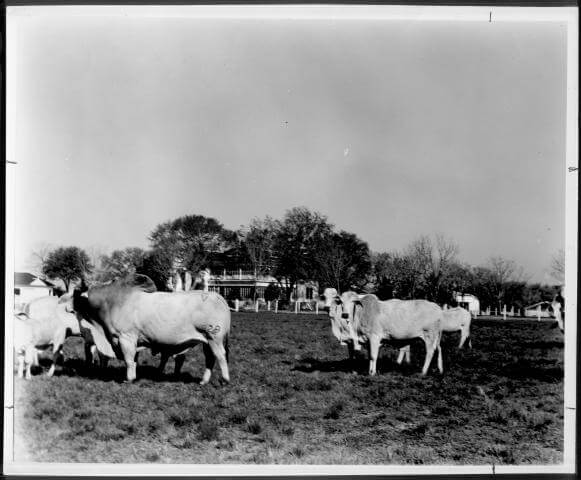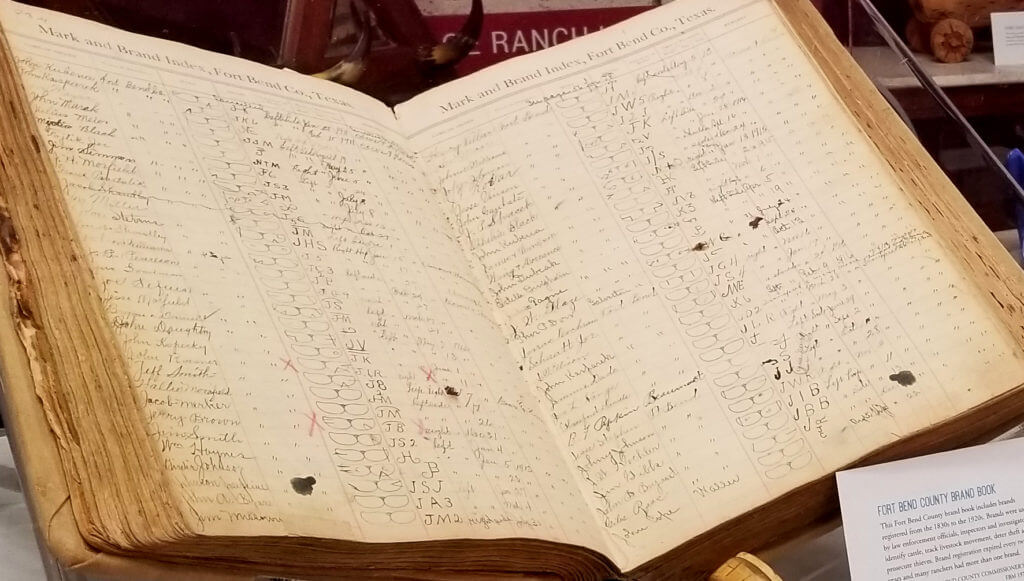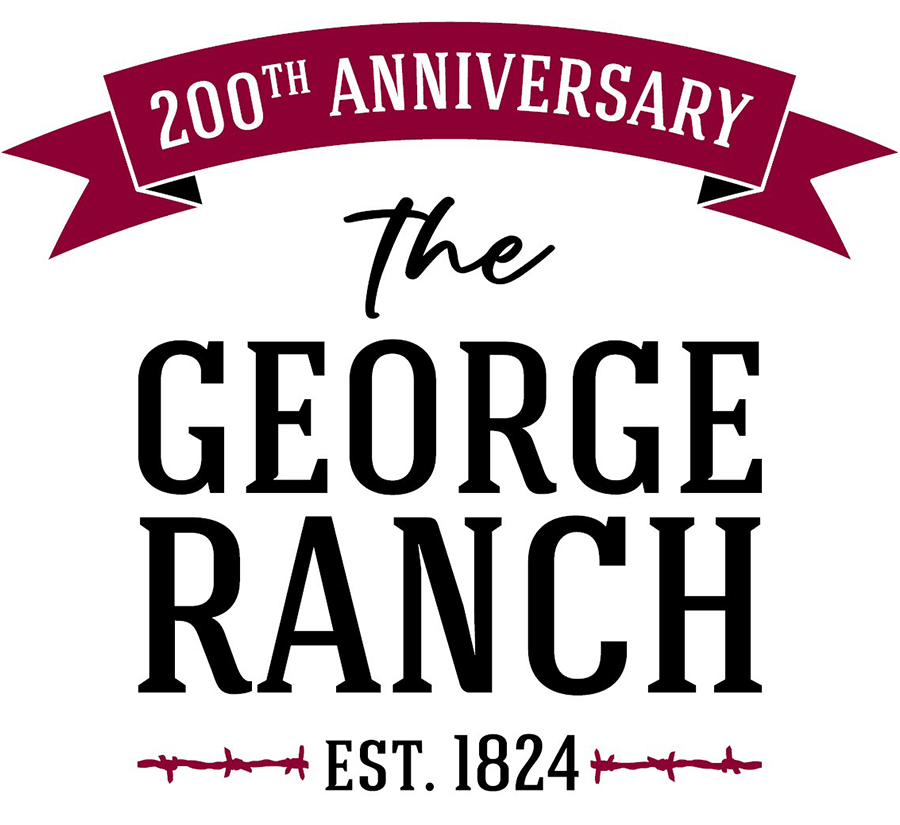Ranch Territory: Cattle Branding in Early Fort Bend County
Early Texas colonists had two options when it came to receiving a land grant. Those who professed to be farmers received a “labor” of land (177 acres). Those who said they were ranchers received a “league” of land (4,428 acres).
Though there were wild cattle roaming the Texas prairies during that time, many settlers brought their own cattle to Stephen F. Austin’s colony. It was tricky to keep track of the cattle at all times – especially since barbed wire fencing wasn’t invented until the 1870s.

Santa Gertrudis cattle at the George Ranch, 1968-1971
Brand Beginnings
To prove ownership, settlers were legally required to mark their cows. The English marked cows by cutting the animal’s ear in a specific way. The Spanish branded the sides of their cows with a family symbol. Early Texas settlers did both.
To keep track of whose cattle belonged to whom, it was required to register marks and brands with the county clerk. In 1832, Richard H. Chisholm was the first man to register a brand in Texas. It was illegal to use or alter someone else’s brand – and it was illegal to use an unregistered brand.

Branded Brahma cattle graze in front of the George Ranch Home in Richmond.
More than a Mark
In addition to the actual mark, the brand placement was also important, as it could be interpreted different ways. A brand that is leaning is considered “tumbling” but one that is horizontal is considered “lazy.” They can be “walking” (with a bar at the bottom), “running” (with angular lines following), or even “flying” (with the addition of wings).

Fort Bend County brand book, which showcases brands from the 1800s.
This material first appeared on a Fort Bend History Association Traveling Exhibit Panel. To learn more about the Fort Bend History Association, visit fbhistory.org.



